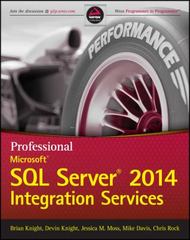Question
Can you please implement a top-down recursive descent parser and build a simple symbol table to properly resolve references within polynomial expressions, in addition to
Can you please implement a top-down recursive descent parser and build a simple symbol table to properly resolve references within polynomial expressions, in addition to represent the polynomial expression as an Abstract Syntax Tree (AST) that will later be evaluated to the result of the polynomial expression in C or C++?
The input to the program is divided into two distinct parts: 1. The first part defines a polynomial to be represented as an abstract syntax tree. 2. The second part evaluates the polynomial with the corresponding set of inputs.
Your polynomial evaluator is responsible for reporting syntax errors, semantic errors, and evaluating the resulting AST from the supplied inputs. Overview of the program is shown below:

Example Inputs to your parser with the corresponding expected output:
POLY X^3 + X + 2; EVAL INPUT X = 4;
The resulting output of this input is as follows below: 70
If no errors exist within the input, then you should evaluate the polynomials and print the results of each evaluation on a separate line. For example, if the resulting input is: POLY X * Y;
EVAL INPUT X = 3; INPUT Y = 2; EVAL INPUT X = 5; INPUT Y = 7; INPUT M = 12;
The resulting output of the polynomial evaluations would then be: 6 35
Here are more test cases that are place in a folder to be used as input, the expected file includes the expected output:
test_01.txt:
POLY X^2 + 7;
EVAL INPUT X = 1;
test_01.txt.expected:
8
test_02.txt:
POLY X^2 + 3 * Y * 7;
EVAL INPUT X = 1; INPUT Y = 2;
EVAL INPUT X = 12; INPUT Y = 7;
EVAL INPUT X = 5; INPUT Y = 11;
test_02.txt.expected:
43 291 256
We also have to keep in mind of Error Codes 1 and 2,
Error Code 1 is risen when a variable re-declaration occurs within the input. This occurs when an input variable with the same identifier is defined more than one time within a single EVAL section. The structure of the error reported should be as follows:
ERROR CODE 1:
where
An instance of this error and its output is shown below: POLY Y^4 + Y * X + myZ; EVAL INPUT X = 1; INPUT X = 23; INPUT Y = 8; INPUT Y = 10; EVAL INPUT X = 2; INPUT X = 3; INPUT Y = 4;
For this input, the resulting error code printout should be as follows: ERROR CODE 1: 4 5 6 7 ERROR CODE 1: 10 11
Error Code 2 is risen when an undefined variable occurs within the evaluation. This error occurs when an evaluation section (i.e., a EVAL section) does not properly define all the variables required for a complete evaluation of the polynomial. The structure output of this error should be as follows:
ERROR CODE 2:
where
An instance of this error is demonstrated below: POLY X^2 + 2 * Y + 3 + Z; EVAL INPUT X = 1; EVAL INPUT Y = 1; INPUT Z = 5; INPUT X = 3;
EVAL INPUT Y = 3;
For this input, the resulting error code printout should be: ERROR CODE 2: 3 3 ERROR CODE 2: 11 11
PARTI { POLY X^3 + x + 2; EVAL INPUT X = 2; AST 12 1012 740 I am OUTPUT EVAL INPUT X = 10; INPUT Y = 11; INPUT PART 11 Symbol Table EVAL INPUT X = 9; Symbol Table Symbol TableStep by Step Solution
There are 3 Steps involved in it
Step: 1

Get Instant Access to Expert-Tailored Solutions
See step-by-step solutions with expert insights and AI powered tools for academic success
Step: 2

Step: 3

Ace Your Homework with AI
Get the answers you need in no time with our AI-driven, step-by-step assistance
Get Started


